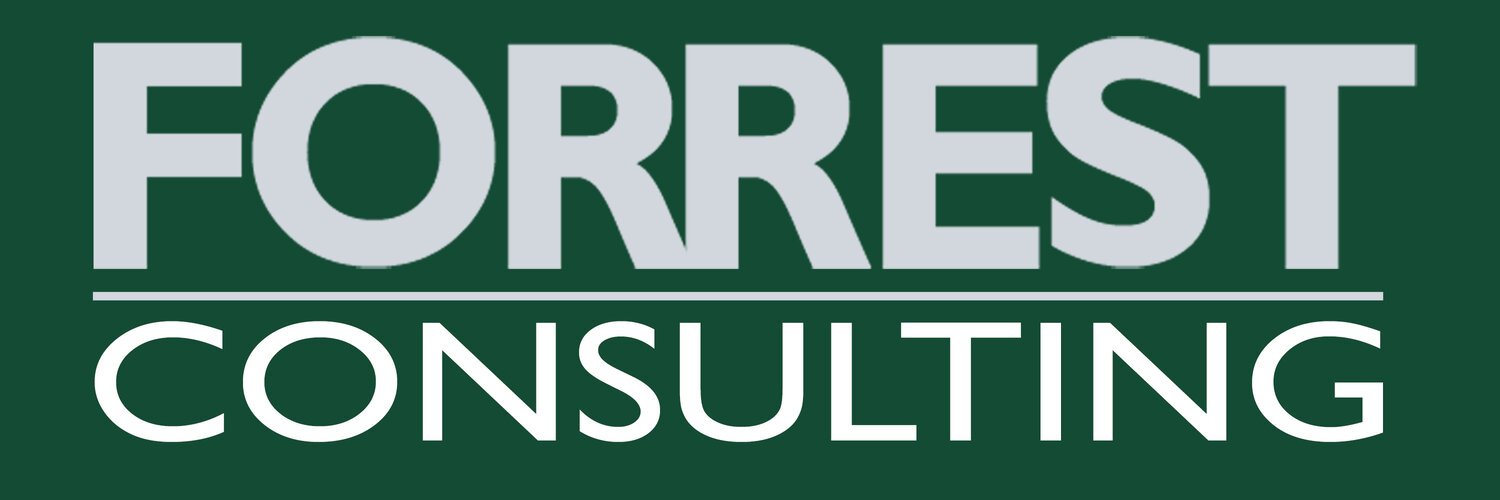Redesign your business like an architect (so it finally fits your vision)
Most businesses don’t break because of one big mistake. They fatigue under the weight of bolted-on offers, legacy processes, and tools that never quite worked together. If that sounds familiar, it’s time to stop “adding rooms” and making make-shift repairs. Instead, start designing—like an architect.
The architecture mindset
Architects don’t start with hammers. They start with a blueprint and a clear purpose. Do the same:
Design with intention. Every element should serve your vision—no exceptions.
Consider the whole system. A change in one area ripples everywhere else.
Build for flexibility. Markets shift; your design should too.
Document visibly. If it isn’t mapped, it isn’t managed.
Iterate. Architecture is living work, not a one-and-done.
A client once asked why their well-crafted plan died on contact with the team. The truth was simple: they built the whole thing in a tiny room with three people and unveiled it as a finished cathedral. No wonder the builders shrugged. When leaders “play it too close to the vest,” execution withers. Open the blueprint, invite real input, and ownership follows. For a quick list of watch-outs and fixes, see my summary of the 16 reasons planning fails—and how to avoid each one.
If you want a picture of “build for flexibility,” look at Netflix. They literally practice failure with a tool called Chaos Monkey that randomly shuts down parts of their system in production. Engineers must design for resilience from day one. It’s gutsy—and it’s why the service stays up when lesser architectures wobble.
Lay the foundation (before you move a brick)
You can’t engineer a great structure on mushy ground. Put these on one page: vision, mission, core values, and a handful of strategic objectives—plain language, no jargon.
Then run a course check. In 2020, with the onset of the Pandemic, Live Nation’s business fell off a cliff; the smart response wasn’t panic but cadence—pause, re-orient, act on the new facts, and keep moving.
Your blueprint: the Business Model Canvas
Map your current and future business on one page: customers, value, channels, relationships, revenue, resources, activities, partners, costs. Use different colors for today vs. intended future—the contrast shows the work.
Here’s the question I ask owners at this stage: produce or provide? Do you need to produce every component in-house, or can you provide the outcome by partnering? Own what creates your edge; partner for the rest. That simple lens applies to marketing, fulfillment, and data work.
For a model-level change, study Adobe’s leap to Creative Cloud. In 2013 they walked away from boxed licenses and embraced subscriptions. It wasn’t a pricing trick; it demanded new capabilities. They stopped selling boxes and started earning trust every month. That forced them to keep customers happy, learn from how people actually used the apps, and track recurring revenue. Product and finance changed how they worked. Scary then; steady growth now.
See your business as a system (not a to-do list)
Trace value from idea → invoice → outcome & next value. Where does it slow? Where does it break? What delights customers? Circle one bottleneck. That’s your highest-leverage design point.
Attract (referrals, content, outreach)
Convert (qualification, proposal, close)
Deliver (onboarding, production, support)
Outcome & Next Value (proof of results, review/testimonial, referral, case study, reorder/add-ons/maintenance/phase-2)
If you sell subscriptions, the Outcome & Next Value stage includes renewal and expansion. If you sell one-off products or project work, it’s where you capture proof, earn reviews and referrals, and surface the next logical step (accessories, training, maintenance, or a phase-2 proposal).
And consider what it takes to scale a business. Taking something that works in a small setting (a pilot, one team, one region) and making it work at larger volume or scope is difficult because complexity rises faster than headcount or budget.
Why it’s hard (in plain terms):
More moving parts → more coordination, handoffs, and delays.
Bottlenecks shift → what wasn’t a problem at 10 units breaks at 1,000.
Quality drifts → consistency is tougher across teams/locations.
Economics change → working capital, unit costs, and lead times behave differently at size.
Governance gaps → unclear ownership and slow decisions compound delays.
California’s high-speed rail story shows what happens when ambition outruns implementation architecture. Voters approved bonds in 2008; construction on Phase 1 didn’t start until years later. Scaling such a project from idea to implementation is hard, but delays, governance gaps, and shifting scope compounded the drag. The lesson: big visions need stage gates where decisions to continue or change course are demanded, clean ownership of activities, and funding sequences that match reality.
Now, flip the script with pizza. Domino’s rebuilt the order-to-delivery stream around digital—from one-tap ordering to a real-time tracker that made the invisible visible. That wasn’t a gimmick; it was a system-design choice that aligned tech, ops, and the customer journey.
Choose one bottleneck and design the future state
Yes, one. Redesign fails when it tries to fix everything at once.
Draft a Target Operating Model for the slice you’ll change (who does what, the exact tool they use - e.g., Pipedrive for deals, Asana for tasks, QuickBooks for invoices, and in what sequence.).
Define the capability upgrade (skills, SOPs, policy).
Sketch the technology roadmap (buy, build, simplify).
Align the org structure (clear ownership; fewer handoffs).
If you want proof that org architecture can speed flow, look at ING. They reorganized around customer journeys using small cross-functional squads grouped into tribes. Fewer handoffs, shorter lines, faster time-to-market—and higher engagement. Banking isn’t “easy mode”; the structure made the difference.
The architect’s toolkit (lightweight, practical)
Value-stream mapping to picture how work actually moves. Capability models to name what must be world-class now. One critical process diagrammed clearly. Scenarios to stress-test the design. And a lightweight weekly/monthly check-in (short agenda + clear owners) to approve changes, keep standards current, and stop process/tool creep.
Consider Zara. While rivals design for seasons, Zara designs for speed: small batches, close-to-home manufacturing, constant feedback from stores, and distribution that moves like clockwork. Design-to-shelf in weeks isn’t luck; it’s architecture—process, supply chain, and data all tuned for responsiveness.
Make iteration your operating system
When the world is VUCA—Volatility, Uncertainty, Complexity, Ambiguity—don’t wait for perfect information. Use the OODA Loop—Observe, Orient, Decide, Act—to cycle faster than the environment changes. It’s a disciplined way to learn in motion, not a license for flailing.
Netflix shows what iteration looks like at scale: ship, measure, harden; repeat. Chaos engineering wasn’t a one-off stunt—it’s a habit that keeps the system honest and the team confident.
A 90-day implementation roadmap
Use the 90-day roadmap for structure and the 60-minute architecture sprint for focus. Start the quarter with one full sprint to pick a single bottleneck and a two-week experiment. Work in short cycles, use a weekly 20-minute Flow Check to unblock decisions, and hold a monthly Architecture Review to keep standards current and choose the next target.
Weeks 1–2: Foundation
One-page vision/mission/values/objectives. Run one 60-minute architecture sprint (see below) to choose one bottleneck and define 2–3 outcome metrics plus a two-week experiment.
Weeks 3–4: Design
Turn the sprint output into a simple Target Operating Model (who does what, with which tool, in what sequence), key SOPs, and a minimal tool plan. Run a 30-minute mini-sprint to pressure-test options and lock your Definition of Done.
Months 2–3: Build
Execute in two-week experiments.
• Day 1 of each 2-week cycle: 15-minute reset (confirm bottleneck, pick the smallest shippable change).
• Weekly: 20-minute Flow Check (unblock, decide, log one change).
• End of 2 weeks: 30-minute review (hit the 2–3 outcomes? ship/adjust/roll back).
Ongoing: Optimize
Monthly 45-minute Architecture Review: retire unused steps/tools, confirm single sources of truth, and—if the bottleneck is relieved—run a new 60-minute sprint to pick the next bottleneck.
60-minute architecture sprint (use inside the roadmap)
• 10 min — Write your one-page foundation (vision, mission, values, 3 objectives).
• 15 min — Map the current value stream from “lead” to “loyal client.”
• 10 min — Circle the single biggest constraint.
• 15 min — Sketch the future state for that slice (simple diagram + 3 outcomes).
• 10 min — Commit to a 2-week experiment and define stop/continue/expand criteria.
Your business is your masterpiece
Design it thoughtfully. When you think like an architect, you create a structure that’s intentional, elegant, and adaptable—one that fits your goals and helps you live your vision of great success.

